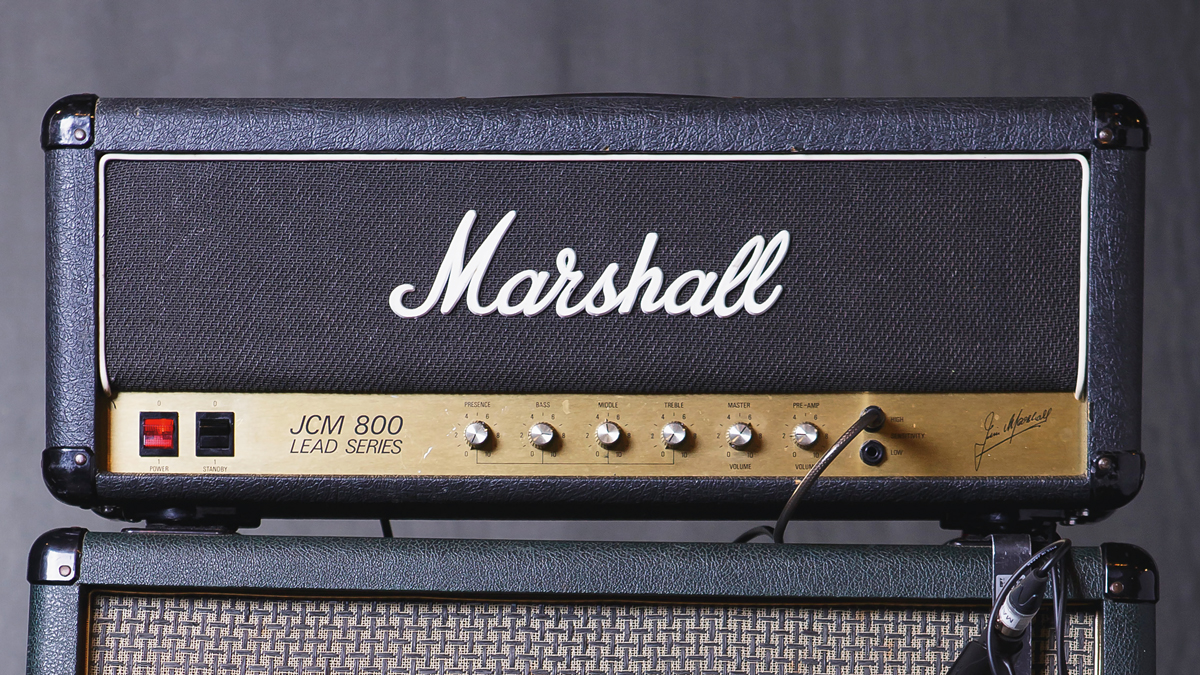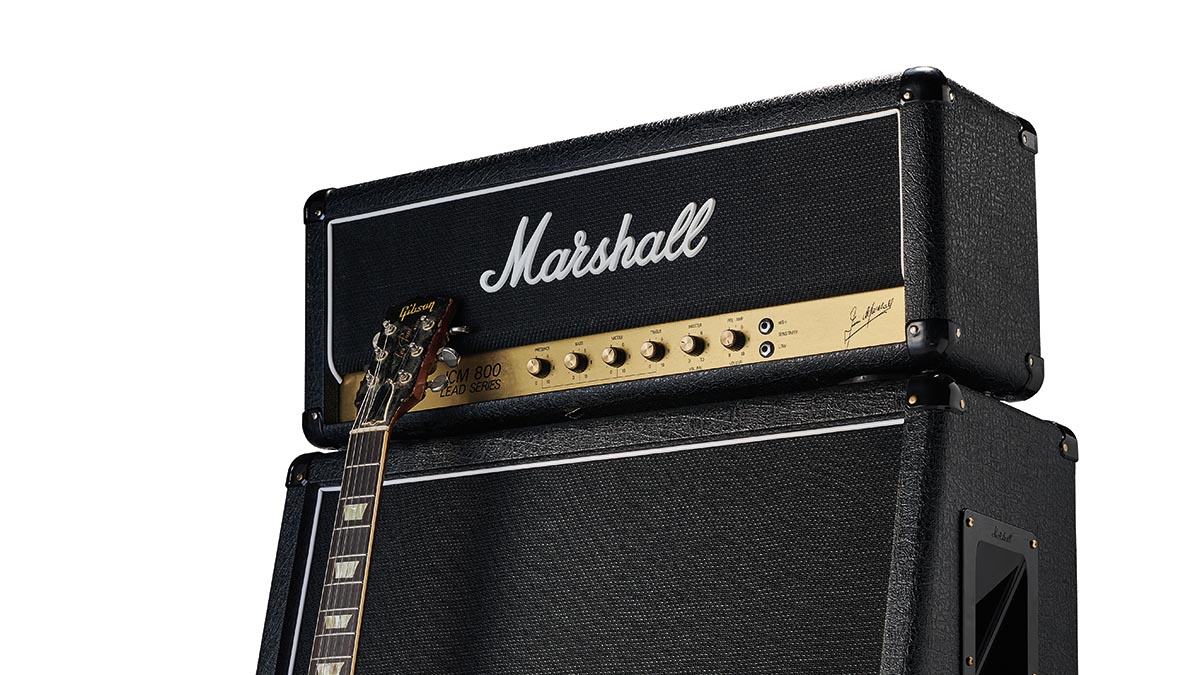Why the Marshall JCM800 2203 was the amp head of choice for a generation of rock and metal guitar players
As the ‘80s demand for crunch spiked, the JCM800 2203 cemented its position as a backline classic

Marshall introduced the JCM800 series in 1981, eventually producing 15 different amp models that included 50- and 100-watt lead and bass heads, various 1x12 and 2x12 combos and channel-switching models.
However, when most guitarists mention a JCM800, they usually are referring to the model 2203 100-watt master volume head, which dominated the ’80s as the guitar amp of choice for probably 95 percent of the hard rock and metal bands who recorded and toured with Marshalls during that era.
Marshall initially produced the JCM800 2203 from 1981 through 1990 and reissued the model in 2002, which is still available today. At first, the JCM800 2203 was internally identical to the JMP 2203 100-watt master volume head introduced by Marshall in 1975, with the only difference being a rather significant cosmetic makeover.
One other important difference is that JCM800 2203 amps exported to the United States were equipped with 6550 power amp tubes (instead of the usual EL34 tubes) due to the U.S. distributor’s concerns about reliability and meeting UL standards.
The sound of a 2203 with 6550s is more aggressive and chunkier, with bigger, tighter bass, negligible sag and compression, more clean headroom and faster, more percussive attack, which players like Kerry King and Jeff Hanneman of Slayer and Zakk Wylde put to good use.
The 2203 underwent a few gradual changes over the years, and by the mid ’80s the model was no longer a near-exact clone of its earlier JMP iteration. In 1984, Marshall added a ¼-inch DI output to the rear panel to allow players to link several heads together like they previously could do with Marshall’s four-input heads (the 2203 had only a pair of high- and low-sensitivity inputs).
In late 1984, the vertical configuration of the two input jacks shifted to a horizontal configuration. In 1985, Marshall removed one of the filter caps (going from six caps to five) and further reduced the number of filter caps to three the following year as a cost-cutting measure.
Get The Pick Newsletter
All the latest guitar news, interviews, lessons, reviews, deals and more, direct to your inbox!
The effect of the filter cap reduction generally is only noticeable when playing with the output fully cranked – some players think the sound is tighter and more aggressive, while others find it thin and muddy. Also in 1986, EL34 tubes returned on amps exported to the U.S.

The Marshall JCM800 2203 and its “little” brother, the 50-watt 2204 master volume head, were the last of the “simple circuit” classic Marshall amps before the company shifted to more complicated designs with channel switching, effects loops and other features modern guitarists demanded.
Players still argue the virtues of a 2203 with EL34s vs. 6550s, but to me it’s like the difference between an oven-roasted prime rib and a grilled ribeye – both are the same cut and both are great; it’s just a matter of which flavor one desires at the moment. For players who prefer the classic hard rock tones of the ’70s, the meaty midrange and singing, compressed, juicy lead tones of EL34s is the way to go.
If you’re into harder, heavier sounds, the big beefy bass, mouth-watering chunk and sizzling harmonic squeals of 6550s seals the deal. Perhaps the best solution for those who can’t make up their minds is using a 2203 with 6550s for rhythm and a cranked 50-watt 2204 with EL34s for leads.
Suggested Settings
Jeff Hanneman rhythm (horizontal input, 6550):
High Sensitivity input, Presence: 9, Bass: 8, Middle: 6.5, Treble: 6, Master: 3, Preamp: 10
Tip: Hanneman and Kerry King used Boss 10-band graphic EQs to boost mids and hit the input with additional gain.
Angus Young lead (vertical input, EL34):
High Sensitivity input, Presence: 3, Bass: 10, Middle: 5, Treble: 9, Master: 4, Preamp: 10
Tip: Technically, Angus usually used a late-’70s JMP 2203, but since the JMP and JCM are virtually identical the tones are too. A 4x12 with 25-watt Celestion Greenbacks sounds sweeter than the 65- to 75-watt Celestions preferred by most ’80s players.
Chris is the co-author of Eruption - Conversations with Eddie Van Halen. He is a 40-year music industry veteran who started at Boardwalk Entertainment (Joan Jett, Night Ranger) and Roland US before becoming a guitar journalist in 1991. He has interviewed more than 600 artists, written more than 1,400 product reviews and contributed to Jeff Beck’s Beck 01: Hot Rods and Rock & Roll and Eric Clapton’s Six String Stories.
“The world’s most convenient all-tube amp head”: Steve Vai-backed firm Synergy has unveiled a tiny amp head that lets you swap in tones from some of the world’s biggest amp builders
“Modified connects us with a long-standing tradition of modifying Marshall amps that dates back to the 1970s”: Marshall unveils factory modded takes on the 1959 Plexi and JCM800 – tipping its cap to the amp wizards of rock’s golden era










